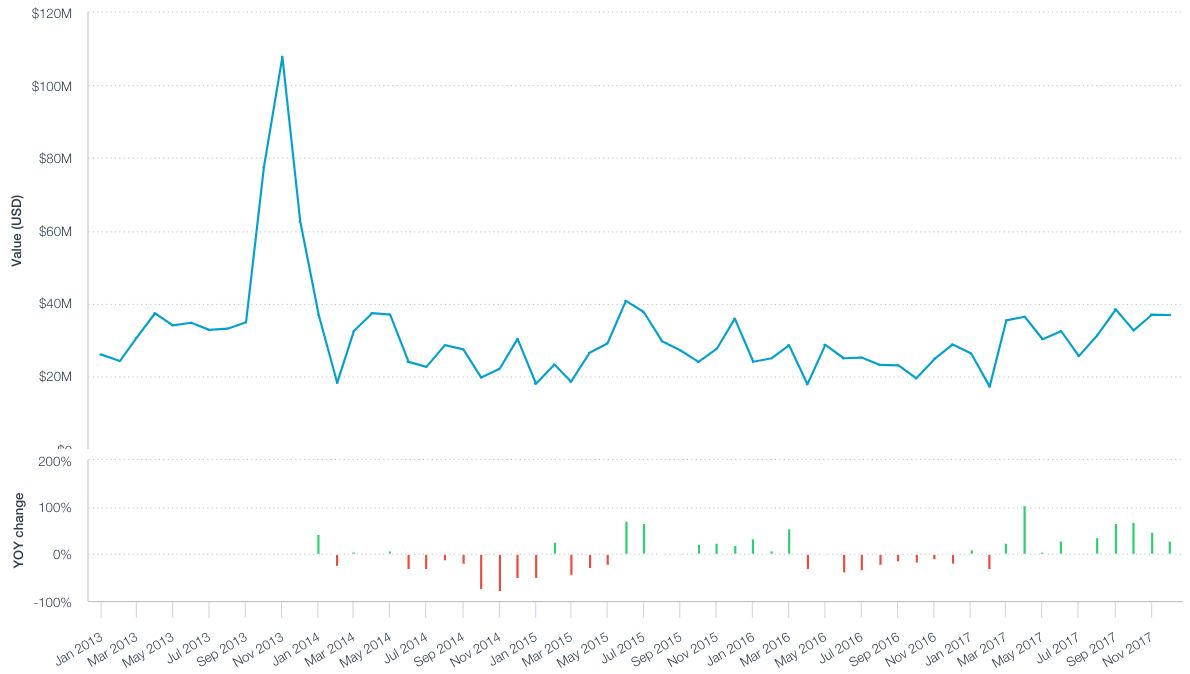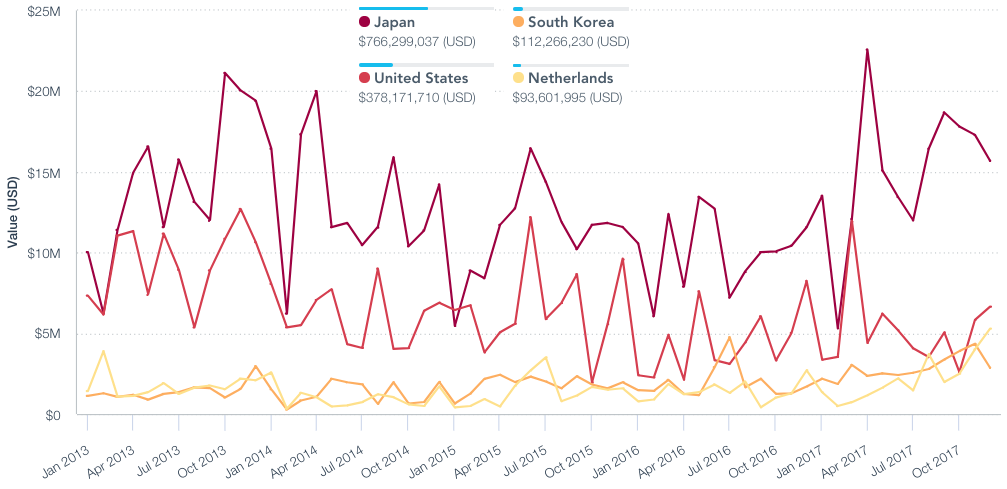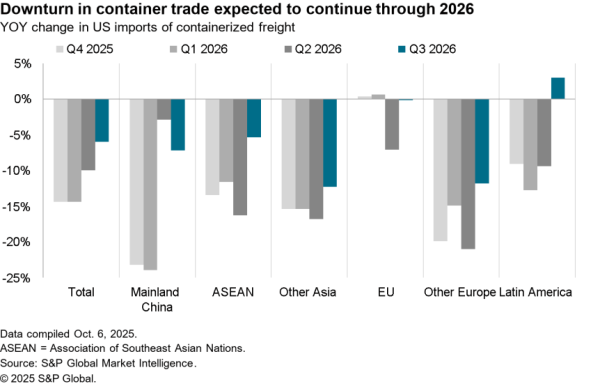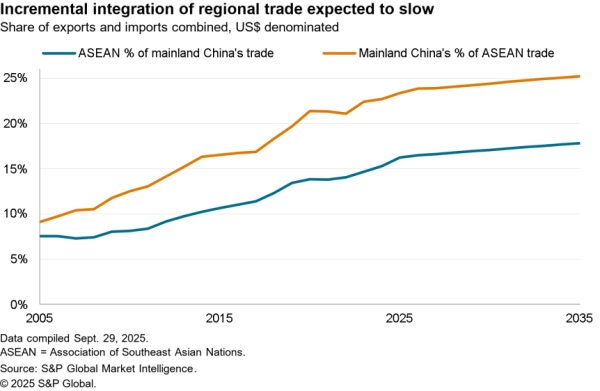The discovery in Japanese offshore waters of a major new source of rare earth metals may break China’s stranglehold on the market. As outlined in Panjiva research of March 16 users of permanent magnets, including Tesla, are becoming increasingly exposed to China as a supplier. A scientific study published in Nature suggests there could be over 400 years worth of supplies (at current demand rates) of yttrium, europium, terbium and dysprosium.
Currently China accounts for 75% of global production, the Wall Street Journal reports, and has restricted supplies. Panjiva data shows Chinese exports of rare earths and their oxides in 2017 reached $379 million after climbing 29.4% on a year earlier. That was well below a price-driven spike in exports in 2013 as it limited supplies.

Source: Panjiva
The find in Japan will take years, rather than months, to develop but given buyers in Japan are by far the largest importers from China, with demand having increased by 48.4% to reach $180 million in 2017, there will be a clear commercial impetus to extract the new reserves swiftly. China’s exporters, led by Grierem Advanced Materials, may need to divert supplies to other countries.

Source: Panjiva




